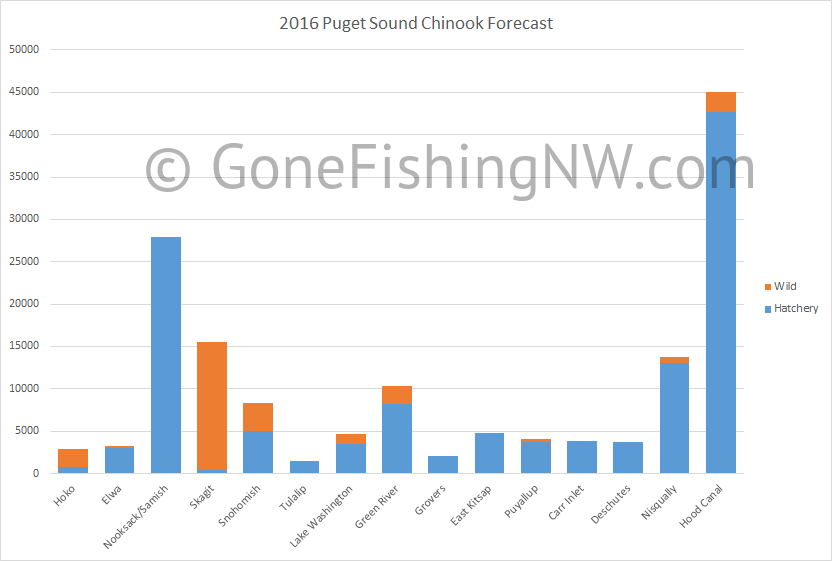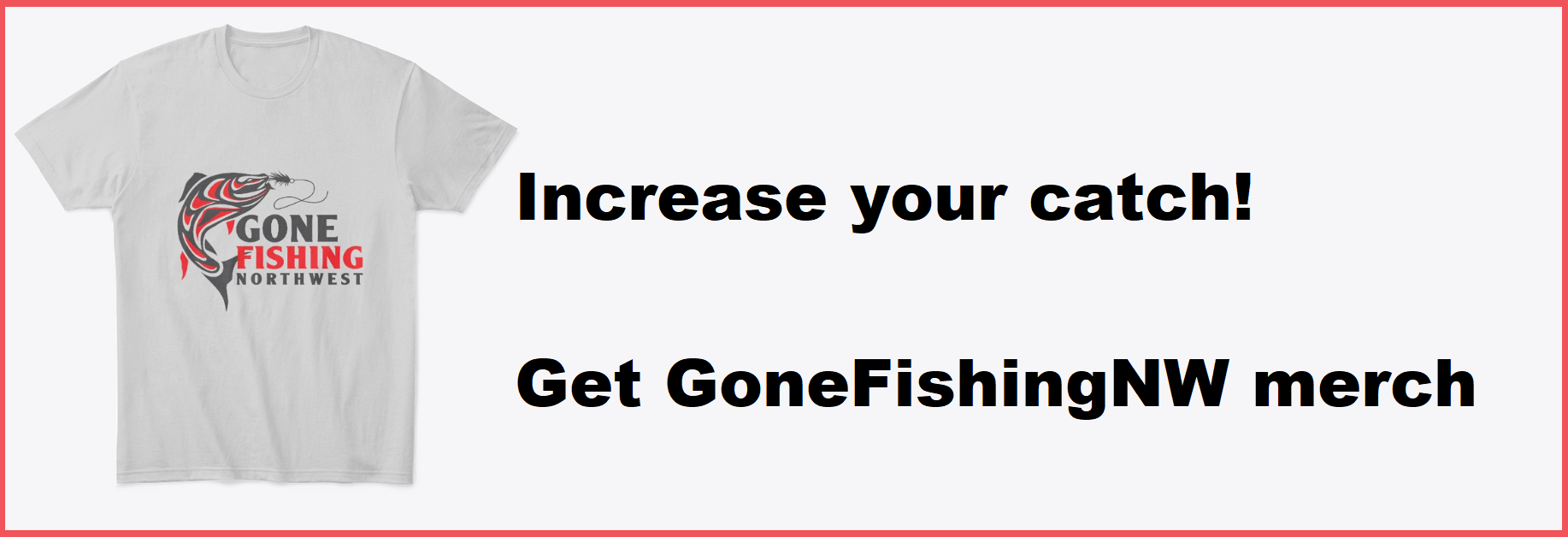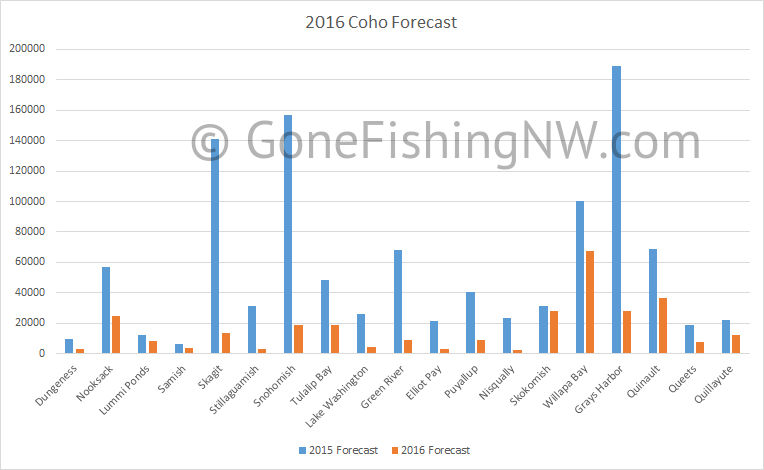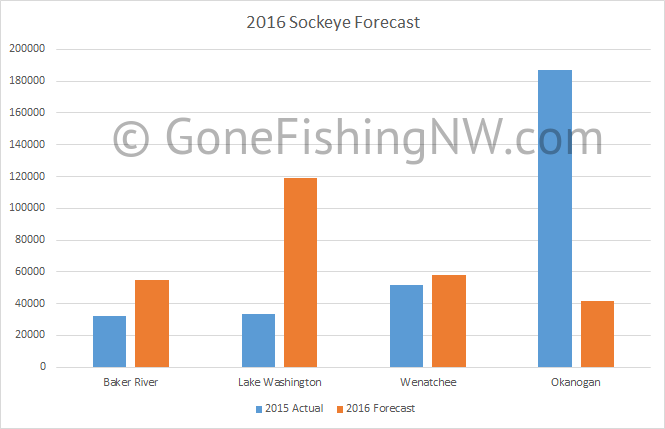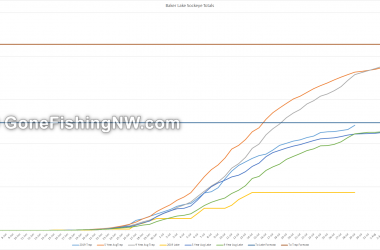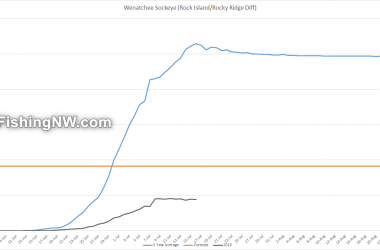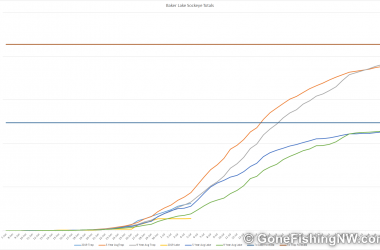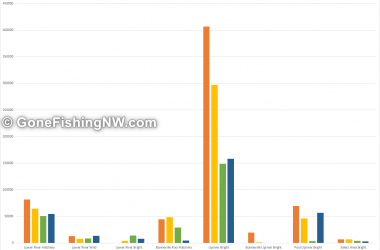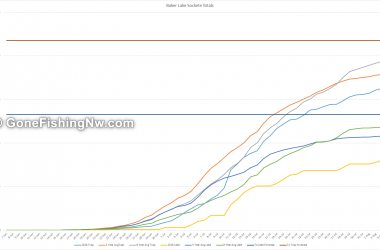It seems like salmon fishing in the state of Washington is just one piece of bad news after another. Poor returns, low rainfall, hot temperatures, restrictive regulations, lawsuits – there seems to be no end.
The 2016 forecasts are out, and I really really wish that I would be able to say the bad news is over. Unfortunately the forecast is overall fairly negative. There are some bright spots, but they are few and far between – and only look bright compared to the worse alternatives.
Before we begin, please take a minute to sign up for our free lure give away.
My summary of the the forecast is below.
Puget Sound Chinook
The Hood Canal, Nooksack and Nisqually are the big 3, in terms of hatchery Chinook return. If you want to play to the odds, those would be the locations to focus.
Last year the king fishery in the Snohomish system was non-existent due to the low return. This year it looks like we have enough for the fishery to open, although we’d expect the fishing to be average.
The Lake Washington return is also on par with previous years, which is enough for a sport fishery in Lake Sammamish. Hopefully the Muckleshoot tribe will not force it to be closed, like they did last year.
Columbia River Chinook
Across the board the forecast for the Columbia river is down compared to 2015’s actual returns. However keep in mind that 2015’s return of 1,305,400 fish was significantly higher than the 900,200 2015 forecast. Perhaps we’ll see another forecast beating year.
In any case the 951,300 forecasted fish total is nothing to sneer at, and is better than the 10 year average.
Coho
Last year’s coho return fell significantly short of the estimates. On top of that the average fish size was lower than usual. However fishing for them was actually decent.
The collective opinion is that last year the coho had a hard time finding bait fish due to “The Blob.” And this is what led to the low numbers and small sizes. Because of this they were still trying to bulk up when they entered Puget Sound, and even freshwater. In turn this made them more aggressive and easier to catch.
In the end, however, we saw fisheries close early so that systems could meet escapement goals.
This year looks even worse. Numbers are significantly down across the board compared to the 2015 forecast. My forecast is that coho fishing will be quite limited this year across the state. Best to start making plans that don’t involve chasing silvers this year.
Sockeye
Reds, or sockeye, have been the up and coming rookie in the past several years. Baker Lake has seen the creation of a new fishery, driven by recent hatchery improvements. On the Columbia it seems each year outdoes the previous years with a strong return to both Lake Wenatchee and the Okanogan.
Last year Lake Washington’s return came in way below forecasts. Even if this year’s forecast is met, it will not be anywhere near close enough to meet the escapement for a fishery.
The Okaogan’s estimate is probably enough for a fishery, but expect the fishery to be limited in season and limits unless the return does significantly better than estimates.
Lake Wenatchee should see a fishery similar to last year, assuming we don’t get a repeat of the low and hot water which killed roughly half the return before they made it to the lake.
The Baker forecast of 55k is slightly larger than the almost 49k forecast last year. Last year 22k fish were transferred to the lake. So accounting for the tribal allocation, we should see close to 25k to the lake for recreational fishing. (The 2015 number in the graph below is the “to the trap” number and doesn’t include the fish netted in the river.)
North of Falcon
For those wanting the complete data, please check out the North of Falcon web site.
Be prepared if you look at it – for some reason the format of the forecast papers are different depending on area and species. To further complicate things some break out the forecast by hatchery vs wild, while others don’t. Likewise some compare against previous year or historical data, while others don’t.
They certainly don’t make it easy to get a good idea of the overall trends, and if the current estimates are good or bad.
What do you think?
Want to get the latest fishing news and tips? Subscribe to our weekly newsletter.
Please share your opinion of the forecast. What do you think about how the WDFW/North of Falcon shares the information? What would you like to see them improve on?

